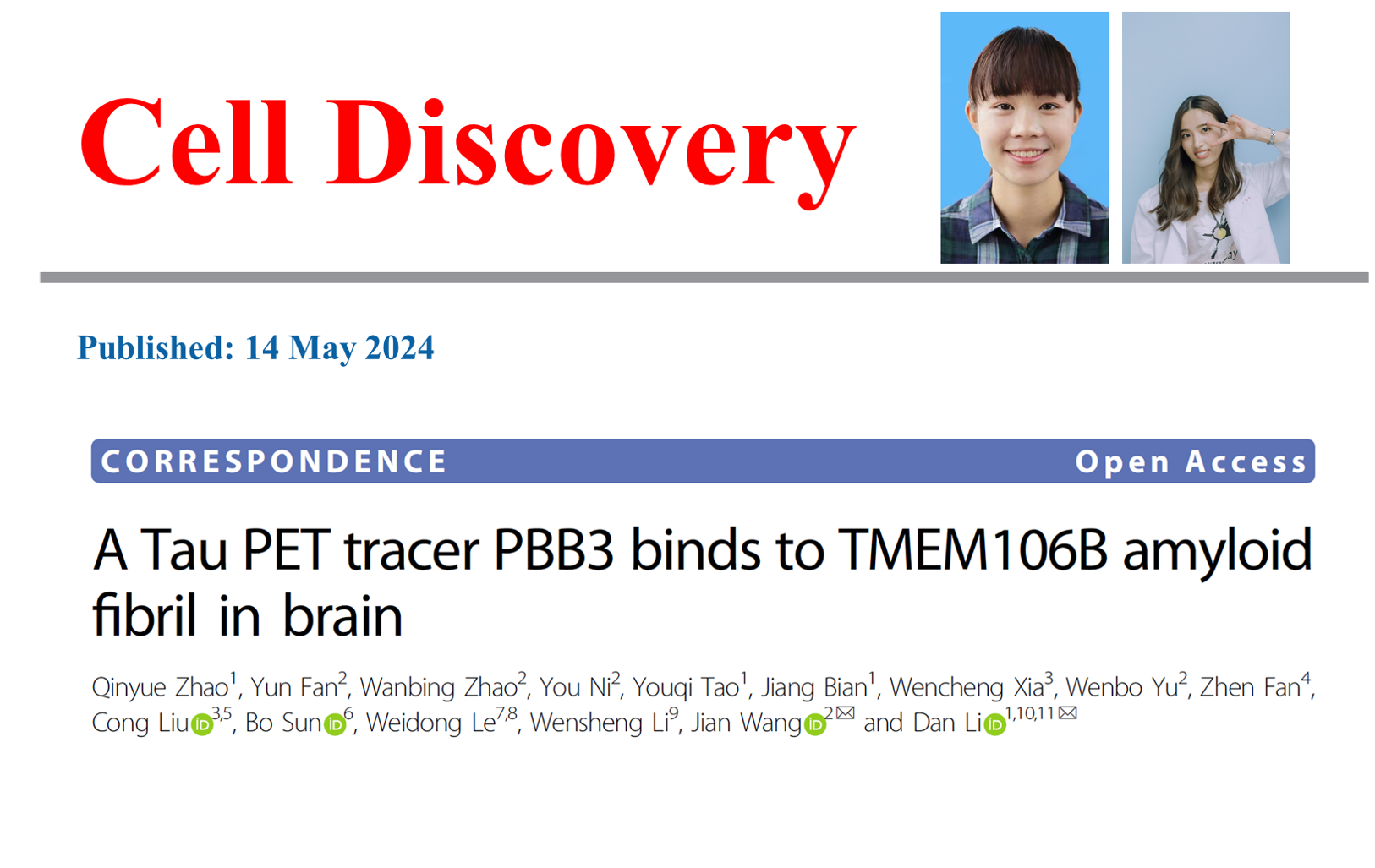Congratulations to Qinyue Zhao and Yun Fan for publishing their work in Cell Discovery!

Abstract: PET tracers have been extensively explored to target specific fibrillar aggregates. The recently identified TMEM106B fibrils widely distributed in both ND patients and aging individuals have provoked two pivotal questions: (1) Whether tracers designed for targeting other fibrils may also recognize TMEM106B fibrils? (2) Can a TMEM106B-specifc tracer be developed to reveal its appearance, distribution in human brains? Our findings reveal that Tau PET tracer PBB3 binds to TMEM106B fibrils, suggesting its potential to visualize TMEM106B in AD brains alongside Tau. This observation is crucial given TMEM106B’s prevalence in various NDs. Further investigations outlined the two PBB3 binding sites, located on the conservative handle part of TMEM106B fibril shared among all three ex vivo structural polymorphs, indicating a broad binding capability (Supplementary Fig. S10). Intriguingly, akin to the binding model of APN-1607 with Tau fibrils, PBB3 mainly adopts a vertical binding pattern with limited direct interaction with TMEM106B fibril, which hints at a common interaction mechanism among similar molecules with amyloid fibrils. Differently, although PiB is similar to PBB3 that both contained a benzothiazole substructure, the planner structure of PiB favored a 1:1 molecular stoichiometry parallel orientation to fibril rungs, like previously binding mode between PiB-α-syn complex14. Such horizontal binding necessitates complete occupancy in order to yield a clear density, which should cross a higher energy barrier and represented a higher binding affinity. Furthermore, the potential off-target binding of PBB3 to TMEM106B indicates the low binding selectivity of PBB3 to different fibrils14. The off-target binding of PBB3 suggests low selectivity among fibrils, but also underscores its potential as a scaffold for creating TMEM106B-specific tracers. Modifying PBB3 to improve selectivity could lead to better understanding of TMEM106B’s role in NDs.
沪ICP备2022014231号-1


